This post is also available in: Italian
The city of Biella – of alleged Celtic origin, stands on the edge of a short plateau delimited by the surrounding mountains, in an enchanted and most favourable position for trade. In fact, right here, and in the adjacent valleys, the wool industry started developing in 1200, until it became – from the second half of the XVIII century onwards – the largest centre for Italian wool production and trade. The city features an elegant centre dating back to the XV century; Biella (known as “Bugella” by the ancient Romans) is also full of ancient churches and beautiful palaces, as well as castles, vineyards, villas and marvellous gardens in its outskirts.
There are also many nurseries, favoured by the cool and rainy climate: we have thus selected the most interesting ones along a special itinerary that will let you discover roses, small fruits, hydrangeas, shrubs, Japanese maples, dwarf conifers, very rare oaks, magnolias, and much, much more.
The nurseries
The map shows the nurseries and other locations included in our suggested itinerary. Distances are also mentioned, in order to make it easier and more practical for you to make your choice and save petrol and time.
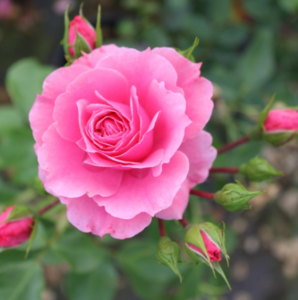
Veimaro Nursery, in Cossato (BI): This nursery was established in 1970, thanks to the passion for ornamental and tree plants, and then it has specialized itself in roses, berries and, more recently, health plants over the course of three generations. All the plants on sale have been reproduced and grown in the nursery, in full compliance with their natural cultivation cycles and without any artificial boosting.
Distances to other nurseries: 8 miles to Pozzi Nursery – 12,4 miles to Salix – 15,5 miles to Floricoltura Fessia – 18,6 miles to Pozzo Nursery.
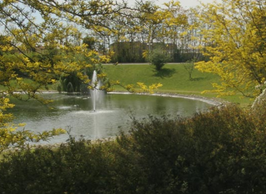
Grandi Vivai Ernesto Pozzi, in Biella: Established in 1922 by Ernesto Pozzi, “Grandi Vivai Ernesto Pozzi” is managed by his sons Giovanni and Ermanno. The huge nursery covers more than 100 acres in the outskirts of Biella; its different exposure and the local climate allow the cultivation of both delicate plants and very rustic species suitable for mountain gardens. This nursery also offers a wide range of trees and shrubs, both of commercial size, and large “ready-to-use” specimens whose root systems have been previously prepared.
Distances to other nurseries: 4 miles to Salix – 8 miles to Veimaro Nursery – 11 miles to Floricoltura Fessia – 13,6 miles to Pozzo Nursery.
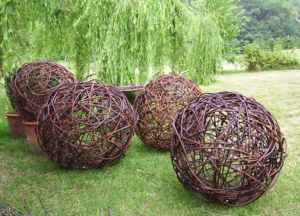
Salix, in Cambursano (BI): Salix was born in 2000 when Anna Patrucco decided to devote herself to the cultivation of willows, both as ornamental plants and as intertwining material for garden structures; she actually rediscovered an ancient local tradition. About three hundred species belong to the Salix genus, 60 of which are spontaneous in Europe, 30 in Italy. They include creeping shrubs and impressive tree specimens, with an incredible variety of shapes, colours and growing stances.
Distances to other nurseries: 13 miles to Floricoltura Fessia – 12,4 miles to Veimaro Nursery – 4 miles to Pozzi Nursery – 15,5 miles to Pozzo Nursery.
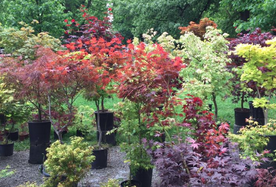
Floricoltura Fessia, in Dorzano (BI): Floricoltura Fessia is a nursery established in 1930; since then, it has transformed itself into a great facility dedicated to collecting different genres, mainly thanks to the great passion of Fabrizio and Cinzia Fessia – the current owners. The nursery produces flowering and acidophilic shrubs, collections of maples (including many Japanese crops), rhododendrons, oaks (some of them very rare), dwarf conifers, magnolias, birches, strawberry trees, ekianthus, hydrangeas, flowering Prunus, clethras and many other plants – also available in pots, as well spectacular large specimens.
Distances to other nurseries: 2,7 miles to Pozzo Nursery – 11 miles to Pozzi Nursery – 15,5 miles to Veimaro Nursery – 11 miles to Pozzi Nursery – 13 miles to Salix.
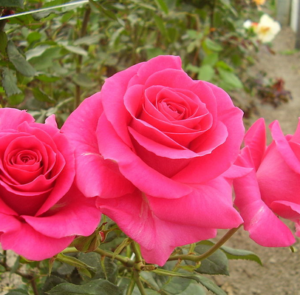
Pozzo Nursery, in Cavaglià: Vivai Pozzo was established more than thirty years ago, in 1977; it can be found near Biella, in the village of Cavaglià (Montemaggiore district), on the hills around Lake Viverone. The company initially produced vine cuttings and fruit plants thanks to the huge expansion of orchards and vineyards in that period. With the construction of the greenhouses, many plant species began to be grown for indoor and outdoor purposes. The true passion of the nursery owners eventually led to the creation of several gardens, mostly still used to experiment with new varieties and combinations of plants and shrubs. The Pozzo family has also specialized in the creation of mountain and rock gardens.
Distances to other nurseries: 18,6 miles to Veimaro – 13,6 miles to Pozzi Nursery – 15,5 miles to Salix – 2,8 miles to Floricoltura Fessia.
From here, you may follow the other itinerary:
DISCOVERING NURSERIES: FROM NOVARA TO VERCELLI, AMONG WATER AND RICE (PIEDMONT/2), travelling to La Montà Nursery (7,5 miles away); alternatively, you may choose another itinerary:
DISCOVERING NURSERIES (AND WINERIES): NORTH OF TURIN (PIEDMONT/4), travelling to Millefoglie Nursery (19,2 miles away).
Beautiful gardens along the way
Biella e i suoi dintorni sono ricchissimi di ville, castelli, giardini, parchi, oasi e riserve naturalistiche. Ve ne segnaliamo solo tre, ma ne troverete tanti altri sfogliando il sito
Biella and its outskirts are rich in beautiful gardens; here’s you can find three of them, while you can refer to a complete list on:
www.italianbotanicalheritage.com,
luoghi.italianbotanicaltrips.com/piemonte/biella/dimore-con-giardino, luoghi.italianbotanicaltrips.com/piemonte/biella/giardini-storici,
luoghi.italianbotanicaltrips.com/piemonte/biella/riserve-naturali
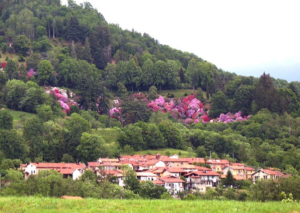
Special Nature Reserve Burcina Park , in Pollone (BI): La Burcina is a park-garden in Pollone, province of Biella, built on the “Brich Burcina”, a hill close to the Prealps of Biella. The origins of the garden date back to the mid-XIX century when the industrial entrepreneur Giovanni Piacenza (1811-1883), began acquiring the land on the south and west slopes of the hill: he wanted to create an informal park, according to the popular taste.
He planted several sequoias, Atlas cedars (Cedrus atlantica), Eastern white pines (Pinus strobus), and many more trees. Since 1934, the park has been owned by the Municipality of Biella which has expanded the surface to 140 acres and in 1980, the Piedmont Region established the Special Nature Reserve of the Burcina “Felice Piacenza”; since then, it has continued to fund new facilities, including an apple orchard and the construction of a didactical area.
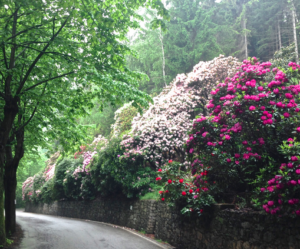
Oasi Zegna e Passeggiata Zegna, in Trivero (BI): the construction works for this oasis began in 1938, funded by the famous textile entrepreneur Ermenegildo Zegna: the Zegna Oasis is now a huge natural park open to the public, which offers a spectacular view of the Po River Valley and Alta Val Sessera, along the Panoramic Zegna State Road. Such a breath-taking view can be enjoyed at its very best in Cervo Valley, while the oasis also includes the hamlet of Trivero (at 2.624 ft above sea level), which still features the Zegna wool mill. In 1993, this oasis was included in an enhancement project on a large mountain area in the Alps around Biella; in 2014, it received the patronage of the FAI (the National Trust of Italy).
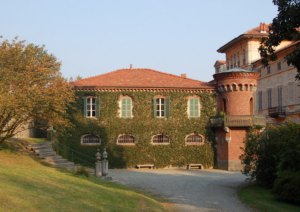
Parco e cantina di Villa Era, in Vigliano Biellese (BI): Villa Era was built between 1884 and 1888 for the Magnani family – building contractors from the Cervo Valley. The architect Petitti from Turin was tasked with its building project. The villa now stands adjacent to the original XVIII century structure, with the wine cellar, the grape processing rooms and the tower. The new building, with a monumental and symmetrical look – featuring a projecting central body – is equipped with a portico and loggia raised of one floor. The facade features two flights of stairs connecting the entrance to the terrace in front of it. The facade has a strong classical imprint, especially regarding its proportions and symmetry, as well as the columns with Doric capitals, the epistyle embellished with frieze, the tympanums, and the windows. In 1935, the property was bought by Ermanno Rivetti, a textile entrepreneur from Biella; the villa still belongs to his family. The current owners have been responsible for the reconstruction of the ancient vineyard, replanting the vines and recovering the original drainage system. Today, the park of Villa Era is the only one featuring a vineyard inside (and vice versa) in Italy.
This post is also available in: Italian


Leave a Reply